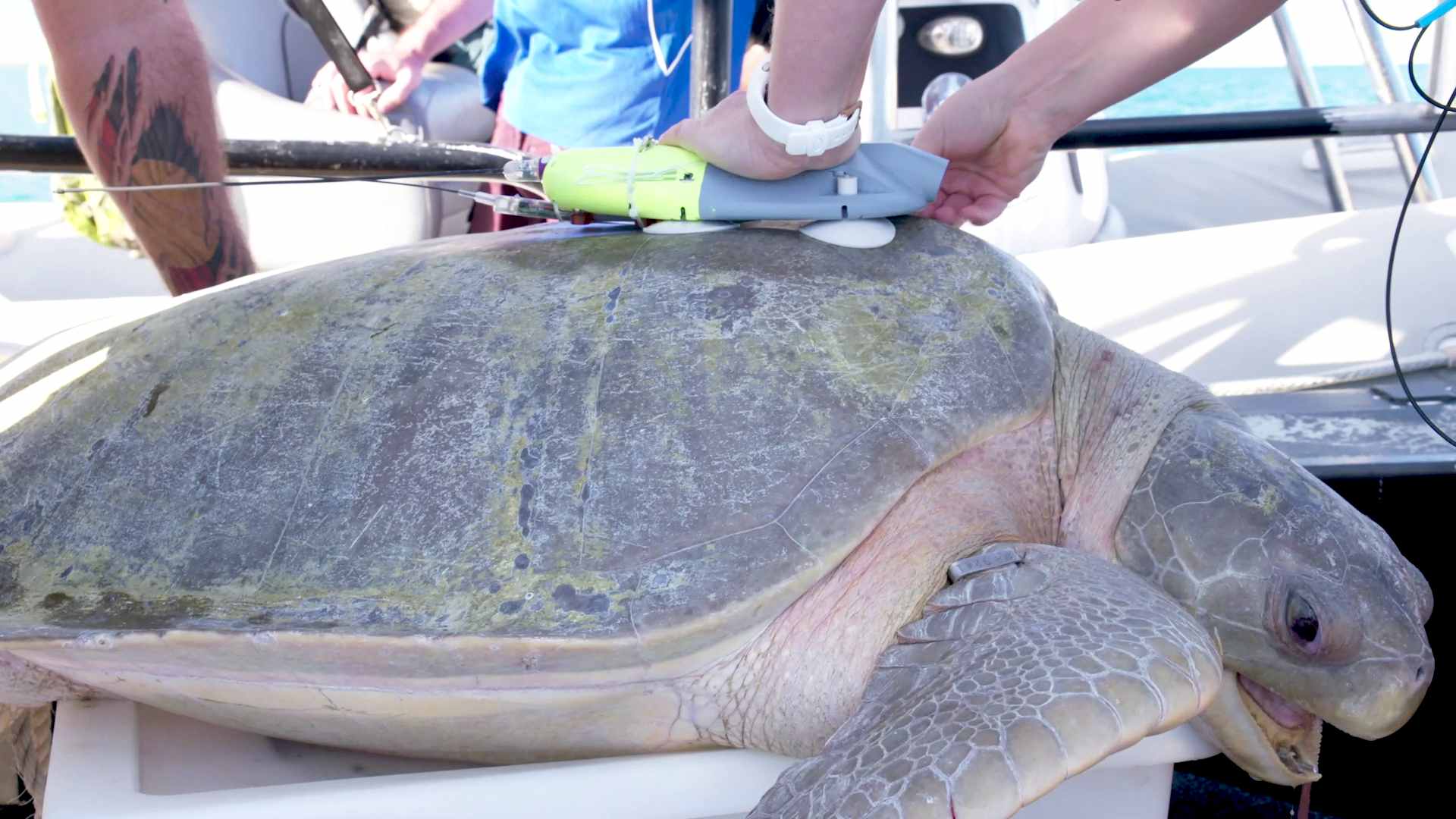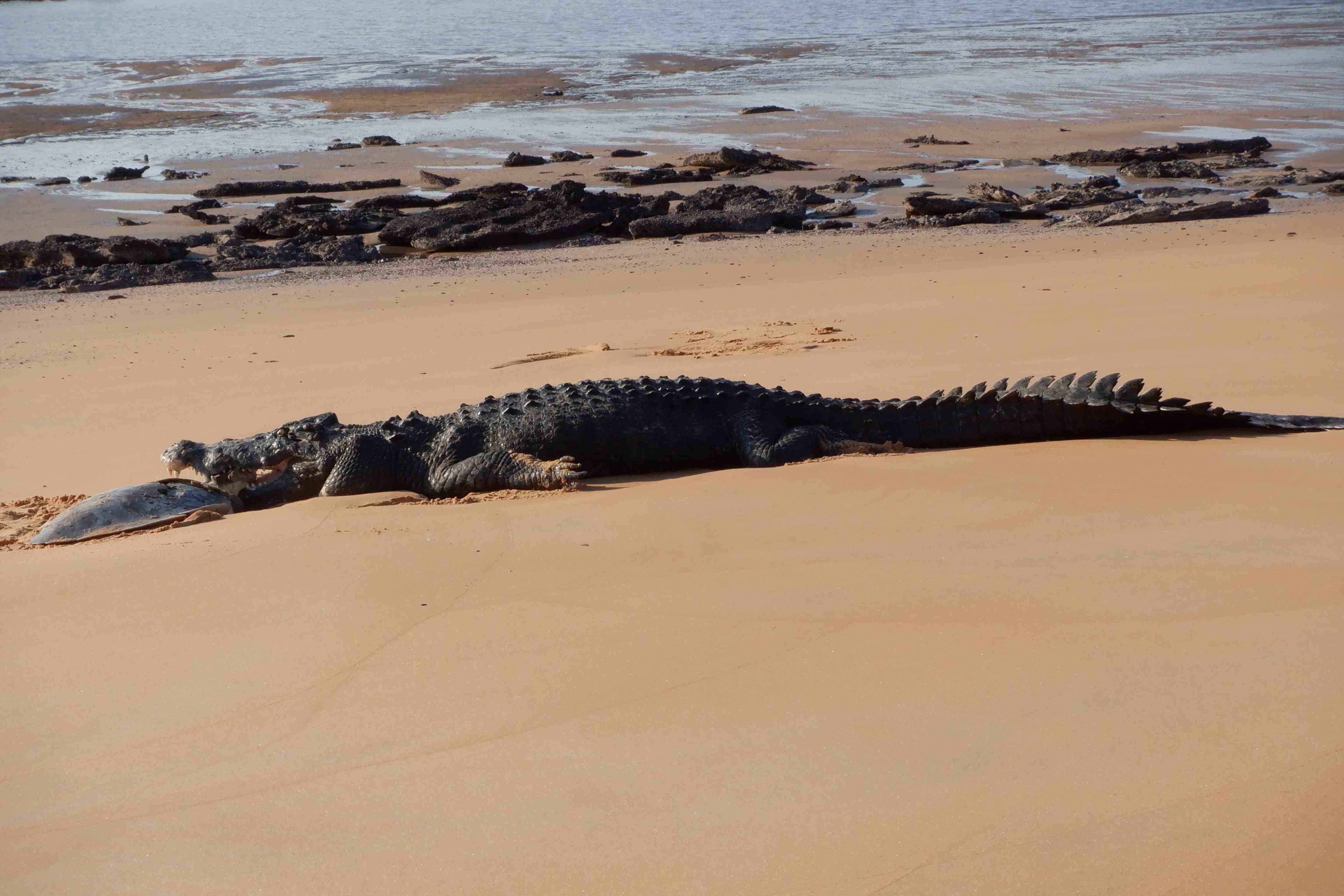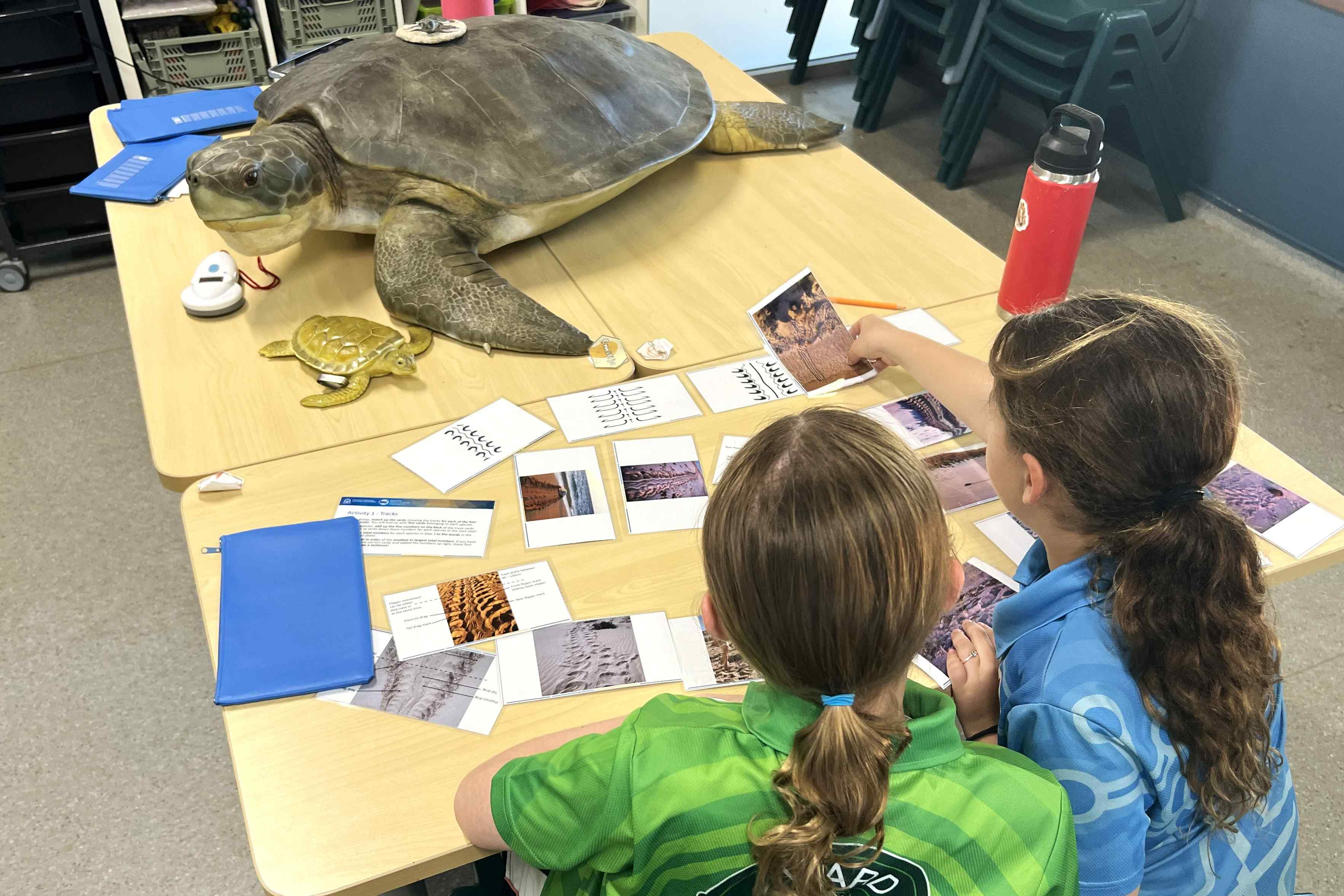

From data to discovery in Roebuck Bay
September 2025
Data collected by flatback turtles equipped with motion sensors, GPS and video cameras have been analysed using a world-first method to identify habitats suitable for specific behaviours like foraging and resting.
The endemic flatback turtle is present throughout the year in Broome’s Yawuru Nagulagun Roebuck Bay Marine Park. To understand why the turtles prefer some habitats to forage and others to rest and the location of those habitats within the bay, DBCA, Murdoch University and UWA scientists teamed up to create “behaviour-specific habitat suitability models”.
The team found that flatback turtles were most likely to forage in shallow, nearshore water especially during high tide, while they rest in slightly deeper waters.
Pleasingly, most (46 – 90%) of the suitable flatback turtle foraging and resting habitats are already protected within the Yawuru Nagulagun Roebuck Bay Marine Park and Yawuru Indigenous Protected Area.
Understanding how and why turtles are using different habitat allows conservation managers to provide smarter and more targeted protection of these species into the future. This method, published recently in the Ecological Applications journal, is a first for marine species and provides a new tool for the dynamic management of threatened species worldwide.







